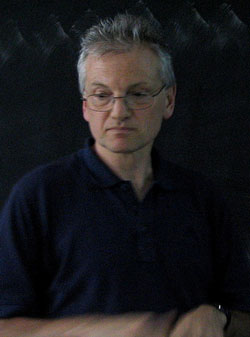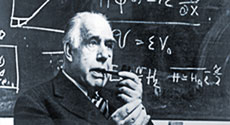Niels Bohr Lecture by Tomas Bohr
Bouncing Droplets, Pilot Waves & Quantum Mechanics
 Abstract: Since the development of Quantum Mechanics in the 20ies it has remained a hotly debated issue, whether one should be satisfied with such a statistical theory, with no precise way of predicting single events, or look for an underpinning deterministic dynamics (hidden variables).
Abstract: Since the development of Quantum Mechanics in the 20ies it has remained a hotly debated issue, whether one should be satisfied with such a statistical theory, with no precise way of predicting single events, or look for an underpinning deterministic dynamics (hidden variables).
This debate has recently been re-energized by the discovery by Y. Couder and E. Fort in Paris that droplets can “walk” on a vibrating fluid surface, pushed by the waves they produce - just like the “pilot wave” dynamics envisaged by de Broglie and leading to the discovery of Quantum Mechanics.
Such walking droplets have been shown to exhibit typical quantum behavior such as discrete orbital states, tunneling through a forbidden region and, at least experimentally, quantum like self-interference on passage of a double slit arrangement.
In the lecture we shall assess this development and discuss, whether this kind of dynamics might actually lead to a new understanding of Quantum Mechanics.
- Wednesday, October 7, 2015 at 15:15 in Aud. 3 at HCØ.
About Tomas Bohr:
|
Coffee and Cookies
Coffee, tea and cookies will be served outside the auditorium 15 minutes before the lecture.

 Niels Bohr Lectures
Niels Bohr Lectures